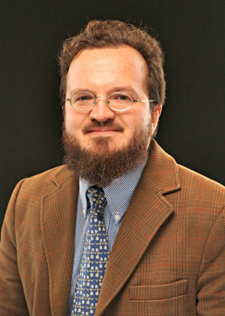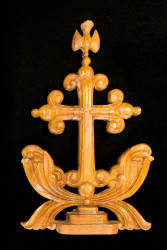
An international collaboration that includes a Vanderbilt University Divinity scholar has published three new online reference works to help preserve Syriac, a Middle Eastern language and culture on the edge of extinction.
The Syriac language is a dialect of Aramaic used extensively by Christians in the Middle East.
“For more than a thousand years, Syriac was one of the most widely used languages in the ancient and medieval culture,” said David A. Michelson, assistant professor of the history of Christianity at Vanderbilt Divinity School. He is also an affiliate assistant professor of classical and Mediterranean studies in the College of Arts and Science. “Syriac culture is very important for understanding key moments in the development and intersection of Judaism, Christianity and Islam.”
This new research on Syriac culture is published by Syriaca.org, an online reference work of which Michelson is the general editor. Syriaca.org has received funding from the National Endowment for the Humanities and the International Balzan Prize Foundation.
Syriaca.org seeks to document the history of all “Syriac heritage communities,” which includes several Aramaic minority populations in the Middle East who have ties to the Syriac language. These communities include ethnic and religious populations who identify various as Syriac, Assyrian, Aramean, Maronite, St. Thomas Christians, Chaldean Catholic, Antiochian Othodox, Syro-Malabar Catholic and the Church of the East.
As a result of ongoing strife in countries such as Syria and Iraq, the present-day Syriac and Aramaic-heritage communities have been under extreme pressure to flee or risk death. “In addition to this terrible human cost, Syriac and Aramaic cultures are gravely threatened,” Michelson said. “Syriaca.org is striving to preserve and digitally record the collective heritage of these threatened communities around the world.”

The three new online publications works are A Guide to Syriac Authors, a handbook of persons who wrote in Syriac; Qadishe, a digital catalogue of saints venerated by the Syriac churches; and Bibliotheca Syriaca Hagiographica Electronica, a guide to Syriac literature about these saints.
“There was a period of time—about 300 to 1300 A.D.—when Syriac culture, especially its literature, flourished,” Michelson said. “Syriac-speaking communities could be found in what today would be Turkey, Lebanon, Israel, Palestine, Syria, Iraq, Iran, India, Central Asia, China and Mongolia. In fact, the medieval version of the Mongolian alphabet was actually derived from the Syriac alphabet.”
Michelson noted that the new publications are interlinked. For example, one might look up information about a particular saint in the guide to saints. The saint’s biographical page then points the reader to the Syriaca.org authors guide for information about an author who wrote about the saint. That author page then links to the Syriaca.org guide on Syriac literature. In 2014, Syriaca.org published The Syriac Gazetteer, a geographical guide to Syriac culture which is also linked in the same way to these new publications.
Michelson’s use of digital technology to document ancient history is part of new research at Vanderbilt in the field of digital humanities. The recently opened Vanderbilt Center for Digital Humanities in Buttrick Hall supports Michelson’s work and similar research on campus. “A core aspect of the Syriaca.org research is using digital technology to gather and publish our collected data,” Michelson said. “Just to illustrate, we have some 1,800 texts in our guide to the Syriac saints. Keeping our information online makes updates much easier.”
“Having a digital humanities center at Vanderbilt means that there’s a lot of energy, faculty collaboration and opportunity to train undergraduates and graduate students in digital research methods for the humanities,” Michelson said.
One example of faculty across disciplines sharing resources involves Michelson and Steven Wernke, associate professor of anthropology and director of the Spatial Analysis Research Lab.
“The code that we wrote for The Syriac Gazetteer was done in such a way that researchers could use it for describing other historical geographic data,” Michelson said. “Steve was able to use the application that we had built—changing the Syriac to the relevant South American languages for his research—for a historical gazetteer of the Andes region. That’s exactly the sort of scholarly collaboration that can happens when digital resources are shared.”
Those who would like to learn more about Michelson’s digital humanities research are invited to view “Syriac: Preserving an Endangered World Culture” at the Vanderbilt Divinity Library through September 2017. Charlotte Lew, a Divinity Library assistant, and Stephanie Fulbright, a master’s of theological studies candidate, were the co-curators with Michelson for this exhibit, which has a permanent home online.